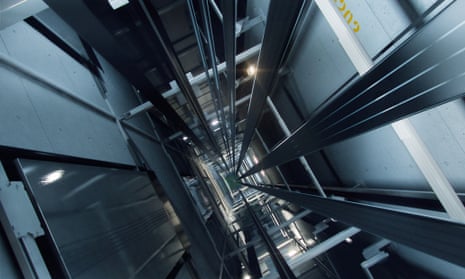Looking Into the Globe of Lifts: Typical Issues Faced by Numerous Lift Systems
As we browse with the upright transport systems of modern-day buildings, elevators stand out as an important element of our day-to-day lives. From hydraulic lifts to grip systems and machine-room-less layouts, each lift type comes with its collection of common concerns.
Hydraulic Lifts
Hydraulic elevators, usually favored for low-rise structures, utilize fluid pressure to regulate the movement of the lift automobile (lift repair companies). This device involves a hydraulic pump pushing oil into a cyndrical tube, creating the lift to relocate the preferred instructions. While hydraulic lifts are recognized for their smooth and quiet operation, they do include their very own collection of common problems
One widespread problem with hydraulic lifts is oil leak. The seals in the hydraulic system can wear in time, bring about oil seepage. This not just develops a mess but can likewise influence the lift's efficiency if left unaddressed. In addition, issues with the control system, such as defective shutoffs or a malfunctioning pump, can trigger interruptions in the elevator's activity.
Routine upkeep and punctual fixings are necessary to ensure the smooth performance of hydraulic elevators. By resolving these typical issues proactively, building proprietors can lessen downtime and make sure the security and effectiveness of their vertical transportation system.
Grip Lifts
When thinking about vertical transport systems in structures, one more common kind apart from hydraulic elevators is the grip elevator. Traction lifts operate using a system of ropes and weights that move the lift car by clutching onto the hoist ropes. This system allows for smoother and much faster vertical transportation contrasted to hydraulic systems.
One of the usual concerns dealt with by traction lifts is rope wear. The constant activity of the ropes within the traction system can lead to tear and wear with time, potentially causing the lift to breakdown or become dangerous for usage. Regular examinations and maintenance of the ropes are important to make certain the lift's appropriate performance and safety and security.
Another concern that traction lifts might come across is associated with the control system. Issues with the control system can lead to problems such as irregular movement, hold-ups in feedback times, or even full shutdowns. Routine screening and maintenance of the control system are vital to stop such problems and make certain the elevator's dependability.
Machine-Room-Less (MRL) Lifts
One of the essential components of MRL lifts is the portable gearless traction machine that is mounted within the hoistway. This maker efficiently drives the lift auto without the demand for large devices found in traditional grip elevators. Additionally, MRL lifts normally make disabled platform lifts prices uk use of a counterweight system to balance the car, more improving their energy efficiency.
Despite their benefits, MRL elevators might face difficulties associated with upkeep and repair work as a result of the confined area for equipment setup. Accessibility for servicing elements within the shaft can be restricted, needing specialized training for specialists. Correct maintenance timetables and routine inspections are important to ensure the continued smooth procedure of MRL lifts.
Overloading and Weight Limit Issues
Are lifts geared up to take care of excess weight loads efficiently and safely? Overloading and weight limitation concerns are vital concerns in elevator procedures. Lift manufacturers style raises london lift company with particular weight capabilities to ensure passenger safety and equipment long life. Going beyond these weight limits can bring about different issues, including mechanical failures, delays, and safety risks.
When lifts are overwhelmed, it puts too much pressure on the electric motor, cable televisions, and other components, possibly triggering breakdowns or breakdowns. If they find excess weight, security mechanisms such as sensors and overload sensing units are in location to avoid lifts from relocating. Additionally, exceeding weight restrictions can bring about boosted energy consumption and wear and tear on the lift system.
To alleviate overloading concerns, developing managers should prominently display weight limits in lifts and enlighten passengers on the value of sticking to these restrictions - lift repair companies. Normal upkeep checks by certified professionals can likewise aid make sure that elevators are running within risk-free weight specifications. By dealing with overloading and weight restriction concerns proactively, structure owners can boost lift safety and performance
Electric System Failures
Going beyond weight limits in lifts can not only lead to mechanical concerns however additionally potentially add to electric system failures within the lift framework. Electrical system failings are a crucial issue in elevator operation, as they can cause unexpected closures, malfunctions, or also safety and security threats.
Regular upkeep and assessments are essential to identify and address possible electric problems promptly, making certain the effective and secure operation of lift systems. By adhering to weight restrictions and carrying out routine electric system checks, structure proprietors can reduce the danger of electrical failings in elevators.
Conclusion

Hydraulic lifts, commonly liked for low-rise buildings, utilize fluid pressure to control the movement of the elevator vehicle.When thinking about vertical transport systems in buildings, an additional usual kind apart from hydraulic elevators is the traction lift. Grip elevators run utilizing a system of ropes and counterweights that relocate the elevator auto by gripping onto the hoist ropes. Unlike conventional elevators that call for a different equipment space to house the equipment, MRL lifts incorporate most of the elements within the shaft, getting rid of the requirement for a devoted maker room.In final thought, lifts deal with usual issues such as hydraulic malfunctions, grip system failures, and electric system problems.